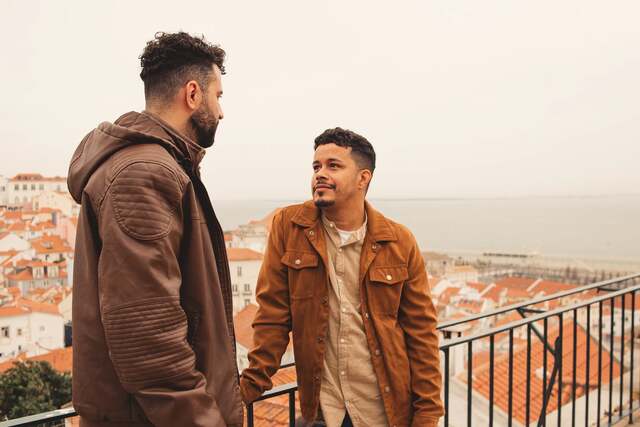Ser vs Estar: What Are Their Differences And How To Use Them

Unsplash: Letícia Pelissari
Oh the sweet, sweet question of “To be or not to be.” However, in this case, the question is more of a “to be or to be.”
In Spanish, there are two versions of “to be” – ser and estar. So as you can tell, because of this, things can get a little confusing. When do you use ser? How do you use estar? Are these verbs actually different?
To be fair, ser and estar are actually different. They serve different purposes. Ser is more of a passive verb. While, estar is more of an active verb. They mean the same thing in English, but they are very different from one another.
So when studying Spanish, make sure to master ser and estar. Because these verbs are essential when speaking and writing something in Spanish. And if you want to make learning Spanish your new habit, get Beelinguapp now. Immerse yourself in our library of Spanish content that will keep you busy no matter the season.
What is Ser?
Ser is used to describe and express the permanent state of something. A simple way to remember what ser is used for is to think about what something is. You can use ser when discussing a person's nature, identity, or characteristics that make them who they are.
| Yo soy | Nosotros somos |
| Tú eres | Vosotros sois |
| Él es Ella es Usted es | Ellos son Ellas son Ustedes son |
Origin and Nationality
- Ellas son alemanas.
(They are German.) - Esos azulejos azules son de Italia.
(Those blue tiles are from Italy.) - Su mamá es de Marruecos y su papá es de Grecia.
(His mom is from Morocco and his dad is from Greece.)
Professions
- Ted es cirujano.
(Ted is a surgeon.) - Laura es arquitecta.
(Laura is an architect.) - Los tres hermanos son ingenieros.
(The three brothers are engineers.)
Identities
- Yo soy Phineas y él es Ferb.
(I am Phineas and he is Ferb) - Él es mi esposo y él es muy guapo.
(He is my husband and he is very handsome.) - Ellas son mis primas.
(They are my cousins.)
Events
- El torneo de tenis es en Londres.
(The tennis tournament is in London.) - El evento de adopción es en la tienda de mascotas.
(The adoption event is at the pet store.) - El concierto gratuito de verano de Taylor Swift en dos semanas es en Central Park.
(Taylor Swift's free summer concert in two weeks is in Central Park.)
Time and Date
- Hoy es Jueves.
(Today is Thursday.) - Es el ocho de agosto.
(It is the eighth of August.) - ¡Oh no, son solo las cuatro de la mañana!
(Oh no, it's only four in the morning!)
What is Estar?
Estar refers to what something does. It is used to discuss temporary things and to explain one's current status, mood, surroundings, physical condition, and preferences.
| Yo estoy | Nosotros estamos |
| Tú estás | Vosotros estáis |
| Él está Ella está Usted está | Ellos están Ellas están Ustedes están |
Locations
- Lina y Addie están en Irlanda durante el verano.
(Lina and Addie are in Ireland for the summer.) - Los zapatos están en el museo.
(The shoes are in the museum.) - La propuesta está en Capadocia.
(The proposal is in Cappadocia.)
Condition and State
- Los chocolates en la bolsa se están derritiendo.
(The chocolates in the bag are melting.) - ¿Dónde estás?
(Where are you?) - El pastel de chocolate está muy húmedo.
(The chocolate cake is very moist.)
Emotions
- Ella está triste porque no consiguió su helado.
(She is sad because she didn't get her ice cream.) - Los estudiantes están molestos porque la galería de arte está cerrada.
(The students are upset that the art gallery is closed.) - Estoy cansada.
(I'm tired.)
Weather
- Está lloviendo.
(It’s raining.) - Está nevando y hace mucho viento.
(It is snowing and very windy.) - Está húmedo hoy.
(It’s humid today.)
Takeaway:
- Ser is used when talking about permanent conditions and when describing what something is.
- Estar is used when talking about temporary things and when describing how something is.
Practice quiz: Complete the sentence.
1. Mi abuela ___ haciendo su famoso helado de pistacho.
- A. está
- B. es
2. Carlos, Ren y Stephen ___ amigos.
- A. están
- B. son
3. ___ enferma.
- A. soy
- B. estoy
4. Las manzanas ___ cayendo.
- A. están
- B. son
5. Ellos ___ una familia de cantantes.
- A. son
- B. están
6. Nosotros ___ del país vasco.
- A. somos
- B. estamos
7. ¿Dónde ___ ellas?
- A. eres
- B. están
8. ¿ ___ en Suiza?
- A. estás
- B. eres
9. Él ___ un padre.
- A. es
- B. está
10. Los libros ___ pesados.
- A. son
- B. están
Get Beelinguapp


